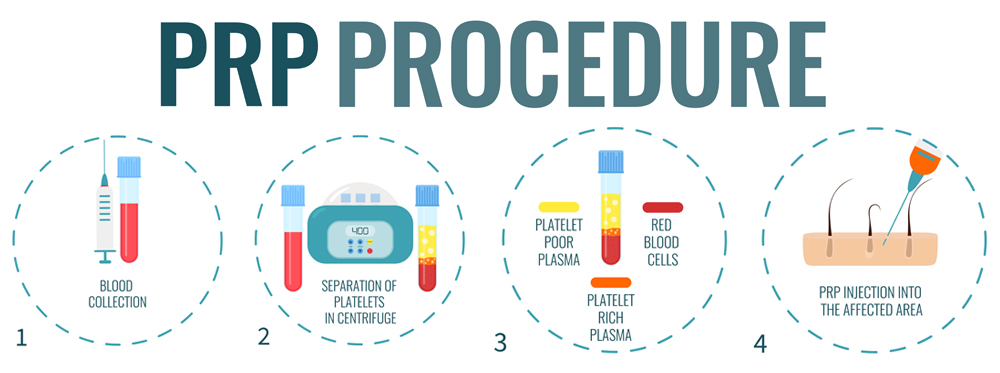What is vampire facial?
Vampire facial is simply the same treatment as PRP, however instead of applying the treatment through injections the treatment is applied through microneedling.
What Is platelet-rich plasma (PRP)?

Although blood is mainly a liquid (called plasma), it also contains small solid components (red cells, white cells, and platelets.) The platelets are best known for their importance in clotting blood. However, platelets also contain hundreds of proteins called growth factors which are very important in the healing of injuries. PRP is plasma with many more platelets than what is typically found in blood. The concentration of platelets — and, thereby, the concentration of growth factors — can be 5 to 10 times greater (or richer) than usual. To develop a PRP preparation, blood must first be drawn from a patient. The platelets are separated from other blood cells and their concentration is increased during a process called centrifugation. Then the increased concentration of platelets is combined with the remaining blood.
How does PRP work?
Although it is not exactly clear how PRP works, laboratory studies have shown that the increased concentration of growth factors in PRP can potentially speed up the healing process. The blood contains platelets which assist in the clotting process and healing wounds. Furthermore, most don’t know that blood also contains fundamental growth factors that are designed to restore and heal a plethora of ailments. Platelet Rich Plasma (PRP) utilizes these regenerative growth components of the blood by activating them to promote natural healing. This is done by stimulating the underlying tissue in order to accelerate tissue and collagen production to create smoother/plumper skin and enhance and restore hair.
PRP is mostly used for two main purposes. The first is for facial treatments, which can be done through direct injections or vampire facial, where microneedling is utilized accompanied by PRP, to help rejuvenate skin and improve skin collagen production and healing. The second application of PRP is for hair rejuvenation where the PRP is injected into the areas with lost hair or weakened hair, to allow for the hair follicles to heal and even reactivate.
Don’t think of PRP as a replacement for facials, peels or exfoliation. Those should all be continued, as they have different goals. PRP should be seen as a replacement for laser wrinkle removal and Body Contouring. The most popular uses of PRP in skin treatments(not including hair rejuvenation) include:
- Improving skin texture
- Adding volume to the face, hands, and neck
- Treating fine lines and wrinkles around and below the eyes
- Plumping up undereye grooves
- Minimizing wrinkles and lines around the mouth
- Eliminating acne scars and stretch marks

When will I see Results?
Unlike that post-facial glow, you won’t see an instant improvement with PRP; results usually start showing after a few days and continue to build over time. The growth factors kick-start collagen production and skin becomes firmer, smoother, more evenly textured and fine wrinkles and lines begin to disappear. While one treatment yields improvement, three treatments a month apart is recommended for the best, longest lasting results.
Precautions and side effects of PRP
After undergoing platelet-rich plasma treatments, patients are able to resume normal activities immediately. There are very few side effects associated with PRP treatments because the injected substance is sourced from the patient’s own body, which eliminates the risk of infection or allergic reaction. Some patients experience redness in the treated area for up to 48 hours after the treatment, but this is not painful and can be easily concealed with makeup. Swelling and bruising are uncommon and last less than a week if they do occur. After the treatment, Patients are encouraged to keep the skin well hydrated with their normal moisturizer and to apply sunscreen several times a day to protect the skin and maintain the effects of the treatment
It is also important to note that if the PRP treatment is induced through vampire facial, all the down time and possible precautions of microneedling apply to this treatment as well.
.png)